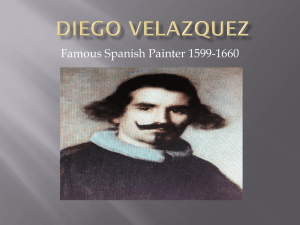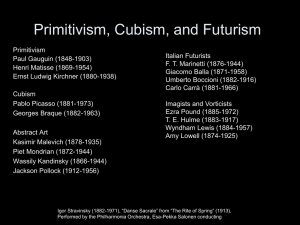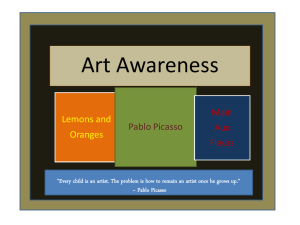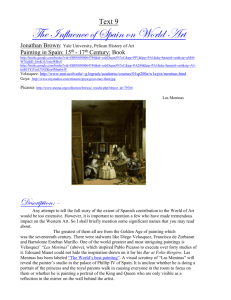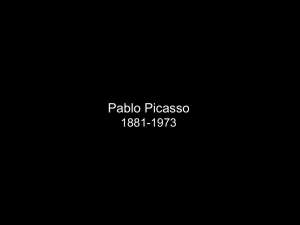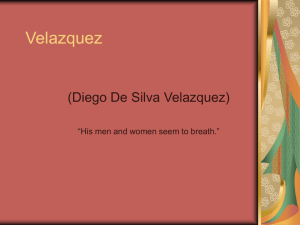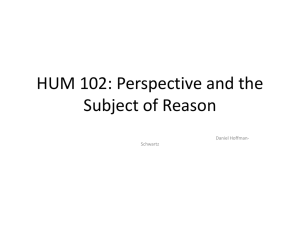Las Meninas - claychastain
advertisement
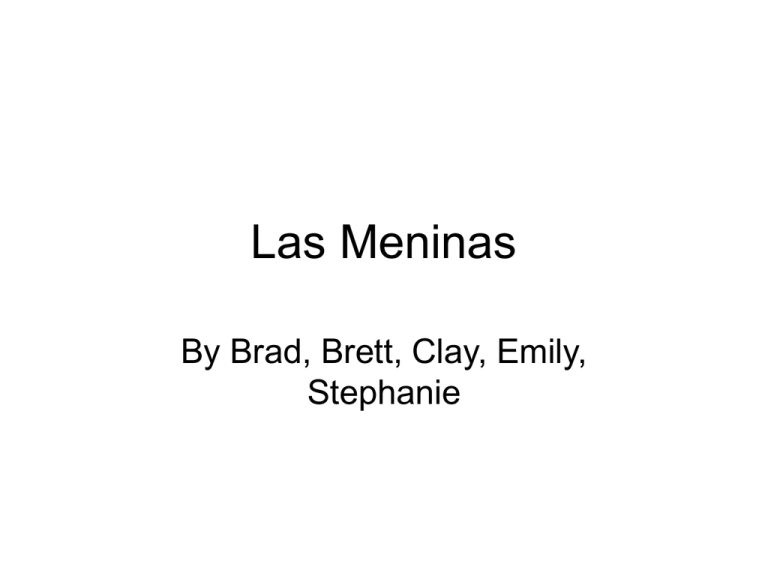
Las Meninas By Brad, Brett, Clay, Emily, Stephanie Velazquez, Las Meninas, 1656 Appropriations by Picasso Picasso, Las Meninas, 1957 History of Velazquez (1599-1660) • First master was the Sevillian painter Francisco Herrera the Elder (c. 1576–1656) • He was in his 20s when he painted the Water Carrier of Seville (c. 1619) • He uses a lighting style similar to that of Caravaggio • His early subjects were mostly religious in nature • He was appointed court painter after his portrait of Philip IV • He learned from the works of Titian which were in the royal collection History of Velazquez (cont.) • He studied in Venice where he became interested in Michaelangelo’s Last Judgment. • At the beginning of 1649 Velazquez left Spain on a second visit to Italy to buy artwork for the royal collection • In 1656, Las Meninas was completed, often regarded as Velazquez’s best work. • In the spring of 1660 Velazquez’s last activity was to accompany the king and court to the French border History of Picasso (1881-1973) • Around the age of 10, Picasso began to invest himself in drawing and artwork. • Pablo entered the local art academy in Barcelona in 1895 • In 1897, recognizing his talent, he was moved to Madrid’s Royal Academy of San Fernando • He became bored with their teachings, however, and opted for his own style of learning by moving to the countryside in 1898 History of Picasso • In 1901 to 1904, Picasso entered his Blue Period of artworks. • In 1904, Picasso moved to Paris to experience the thriving city’s art culture. • In 1909, Picasso focused his efforts to break free of conventions with the introduction of Cubism. • During the surrealist movement of the 1920s, he became influenced by its techniques and incorporated some elements into his own works. • After World War II, many people thought that Picasso was beyond criticism; this later became known as the Picasso Myth. Depth of Artwork • A similar theme displayed by both artists is the complexity of understanding who the viewer actually is. • Both pieces make use of almost postmodern characteristics such as being aware of the audience. • The artworks also challenge the viewer to make their own interpretation of the subjects of the artwork, a staunch opposite to the linear narratives in works of the artist’s time period.
